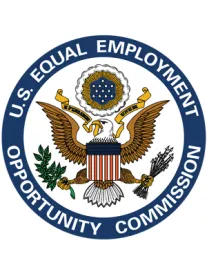On January 21, 2016 the EEOC released Proposed Enforcement Guidance on employee retaliation claims under numerous federal equal employment opportunity laws, including Title VII, ADEA, ADA, GINA, and more. Because it’s the first time since 1998 that the EEOC has proposed a new set of guidelines in this area, it is imperative that employers have a good understanding of the Guidance.
The EEOC’s stated purpose for this release was to offer a more detailed reference source on retaliation for employers and employees since retaliation claims have almost doubled in the last 18 years, and since there have been significant court rulings that have changed the landscape of retaliation claims in that period. That seems admirable enough, but the proof is in the pudding, as they say, and after reading the Guidance, it’s difficult not to be concerned that the Commission may be looking to make retaliation claims easier to bring.
In order to prevail on a claim for retaliation, employees generally must show that: 1) they engaged in a protected activity; 2) they suffered adverse employment action; and 3) that their protected activity caused the adverse employment action. One hallmark of the Commission’s latest Guidance is to emphasize that “adverse employment action” should be interpreted broadly, and may include things which happen outside of work and/or which don’t have any tangible direct impact on an employee’s employment status. This could possibly include something as innocuous as changing an employee’s schedule. While we wouldn’t tell you that action alone is likely to make a retaliation claim, the fact it may even be on the EEOC’s radar in evaluating these claims is enough to make it noteworthy.
Additionally, to satisfy the causation requirement in the third element under the EEOC’s new Proposed Guidance, an employee may provide a ‘convincing mosaic’ of circumstantial evidence that would support the inference of retaliatory animus. The pieces of that mosaic may include suspicious timing, verbal or written statements, comparative evidence that a similarly situated employee was treated differently, falsity of the employer’s proffered reason for the adverse action, or other ‘bits and pieces’ which form an inference of retaliatory intent. This application provides an even wider latitude to find retaliation compared to what existed before.
Although this Guidance does not have the force of law, it remains relevant in the sphere of employment law since EEOC investigators may rely on it to bring claims, and since Courts may consider deference to the agency’s position in evaluating retaliation claims which make their way into court. Regardless of the finalized form of the Proposed Guidance, employers can always do things to proactively combat any risk of retaliation claims. For instance, employers should create and publish an anti-retaliation policy, and employees also should be provided with multiple points of contact to report any potential retaliation issues. While defending retaliation claims seems to be getting harder by the year, at least don’t make it easier for those claims to come forward in the first place.



 />i
/>i

